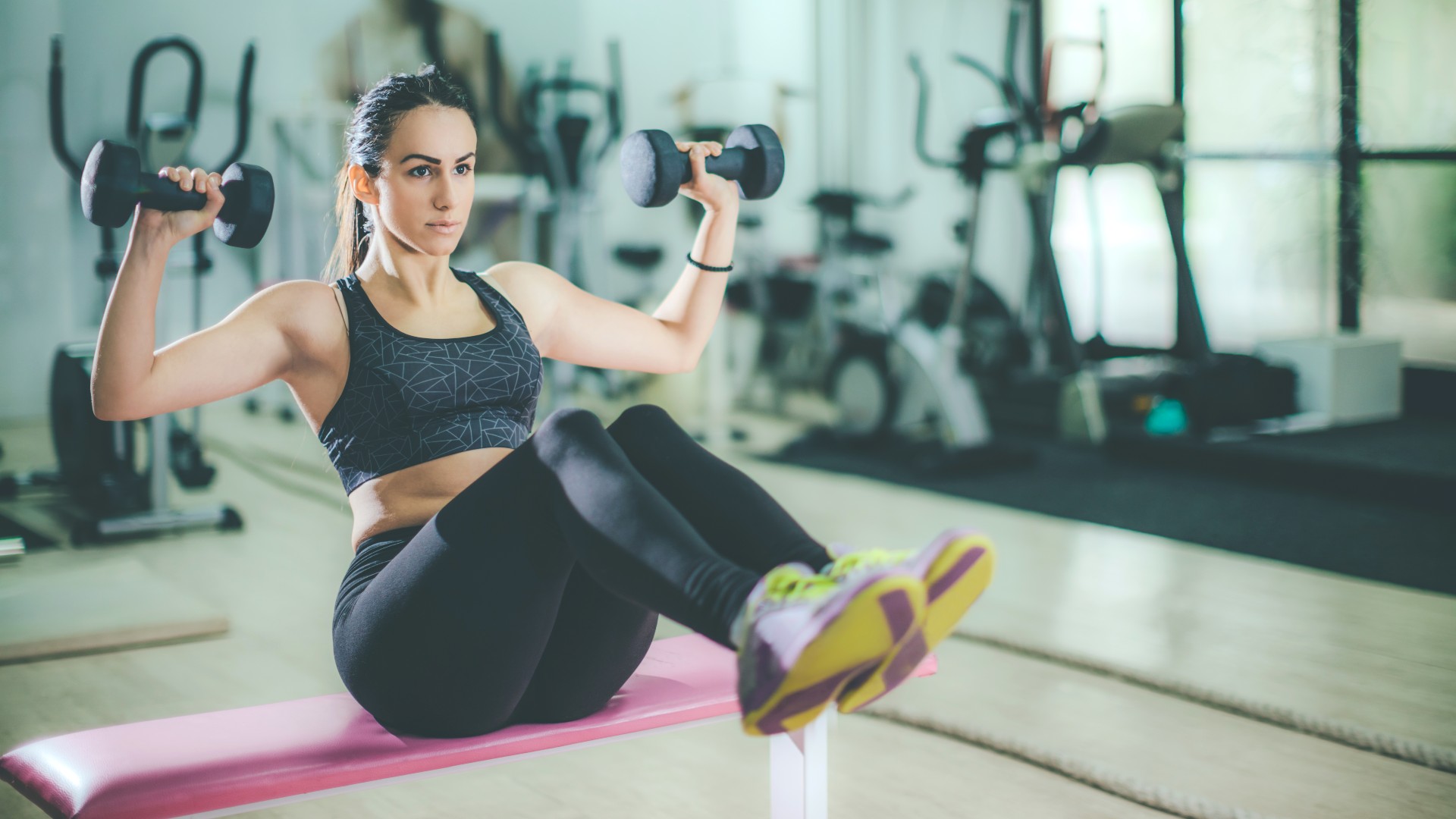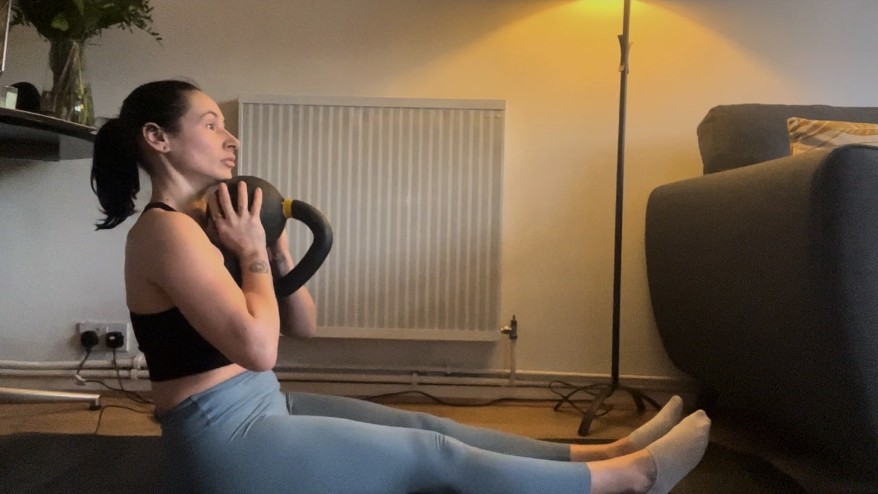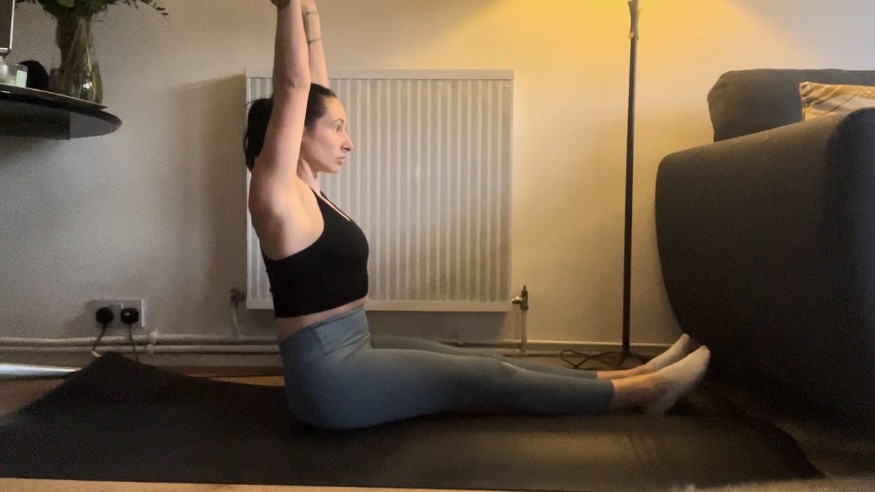
I’m a fan of building the bench press, overhead presses, and push-ups into my upper-body programs to develop strength and muscle in my shoulders, chest, and arms. But when my program gets stale, I like to mix it up.
Enter the Z press. If you haven’t heard of this strangely named press variation, the move will send your upper body into beast mode on chest day, and all you need is a pair of the best adjustable dumbbells or kettlebells to do the press, which involves sitting on the ground with your legs extended and pressing the weights above your head.
It's a challenging functional move that requires lots of core engagement to help your torso stable. Because your legs can't help drive the press, your body must perform a strict press to get the weight above your head. Although the popular exercise can be found in strength programs, strength and conditioning workouts, and classes like CrossFit, I wondered what the Z press could do for my upper body when performed every day for a week. I found out.
Z press: Benefits
When done well, the Z press could improve your mechanics and overhead press, develop core strength, and build upper muscle and stability. However, you must adopt a good posture and sit tall to control the press without relying on your legs as a backup.
I see Z presses make it into some weightlifting programs and classes like CrossFit, but I don’t think it’s used enough. The Z press should be a trusted go-to to build better stability and upper body strength.
Z press: Muscles worked
The Z press strengthens multiple muscle groups and joints, making it a truly functional compound exercise. The move targets your triceps, anterior deltoids, pectoral muscles, and core. But crucially, the press requires plenty of stability and control from your shoulders, meaning your rotator cuff muscles must work harder.
Your rotator cuff muscles comprise four muscles that surround your scapulae (shoulder blades) and support your shoulder through movement. To prevent injury, these muscles must activate, but rotator cuff tears or overuse injuries often happen because of poor mechanics, so perform this exercise with care.
Get instant access to breaking news, the hottest reviews, great deals and helpful tips.
How to do a Z press


The Z press doubles up as an isometric and isotonic contraction exercise; your core works to stabilize your torso without flexion or extension (isometric), but the arms and shoulders will move (isotonic).
Sit on the floor with your legs extended in front of you. Sit tall through your spine with your core engaged. Grip your weights and press your heels downward. Engage your chest, hips, and back muscles, and set your shoulders down. Rack your weights with elbows lifted and palms turned forward. Press the weights directly upward with power. Lock your arms out at the top without flaring your ribs or arching your spine. Slowly lower the weights with control while remaining tall and balanced.
I did the Z press every day for a week — here’s what happened to my shoulders
It schooled my upper body
I used 22-pound dumbbells for this move — lighter than I would for standing strict presses or push presses. You can only rely on your upper body to perform the Z press, so I had nowhere to hide. I performed five sets of 12 reps — slightly more than a typical hypertrophy (muscle building) workout but not quite an endurance set or strength program.
It’s worth remembering that to build strength and muscle, you must commit to a regular periodized program, and as a trainer myself, I was under no illusion that one week of the Z press would transform my upper body.
That said, this press variation beasted me. I was puffing my way through the last few reps, which is how I knew I was hitting the correct rep and weight range — I always advise clients to aim for very tough end reps. The last time I felt my shoulders work this hard was when I did 50 Arnold presses every day for a week, and I felt it for days.
My hamstrings were tight
For people who have tight hamstrings and struggle to extend their legs, you have a few options: sit cross-legged, use a wall, or place a block under your sit-bones to tilt your pelvis forward — you might find this $10 accessory helps you sit taller and engage your hips and core muscles.
It reminded me how much I’ve been slacking with posture. Internally rotated shoulders (hunching forward) result in bad posture, and the culprit? Tight pectoral muscles and lats. According to the Rush Chiropractic Center, these larger muscles ‘take over’ and prevent the smaller stabilizing muscles in your back and shoulders from pulling your shoulders back and down. Over time, it can impact the function of your shoulder girdle.
Throughout the move, I had to focus on bracing my stomach, contracting my back muscles, setting my shoulders, and moving through a full range to ensure my mechanics were on point. It’s easy for posture to slip, so I recommend using a mirror or wall to practice if you’re new to the Z press.
I dropped weight
I have a rotator cuff injury, so when my left shoulder began hurting, I decided to take action and drop it down. Naturally, everyone has a dominant side during any exercise, but research shows that dumbbells are a great way to work on muscular imbalances. When lifting a barbell, it’s easier for your dominant side to take over, whereas dumbbells force the left and right shoulder to work in unison.
Dropping down isn’t a weakness, it allowed me to press with much better form rather than lifting from ego, and I felt all my upper body muscles working properly without pain or instability. My upper body needed a well-deserved rest after a week of the Z press and I spent the next few days prioritizing rest, yoga, and lower body exercises to allow my muscles to repair and recover.
If you have tight or weak hip flexor muscles and want to try the Z press, we love these mobility exercises for hip flexor pain. Avoid leaning back or hunching and maintain a solid base to press from. Beginners, start light, reduce your reps, and try to graduate from crossed legs or the wall to build a stronger core and upper body.
Learn how to do a push-up, try these chest-day variations, and we love this shoulder workout. For active recovery routines, these are the best walking workouts to try.

Sam Hopes is a level 3 qualified trainer, a level 2 Reiki practitioner and fitness editor at Tom's Guide. She is also currently undertaking her Yoga For Athletes training course.
Sam has written for various fitness brands and websites over the years and has experience across brands at Future, such as Live Science, Fit&Well, Coach, and T3.
Having coached at fitness studios like F45 and Virgin Active and personal trained, Sam now primarily teaches outdoor bootcamps, bodyweight, calisthenics and kettlebells.
She also coaches mobility and flexibility classes several times a week and believes that true strength comes from a holistic approach to training your body.
Sam has completed two mixed doubles Hyrox competitions in London and the Netherlands and finished her first doubles attempt in 1:11.
